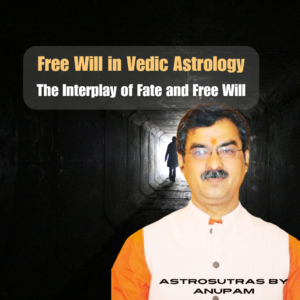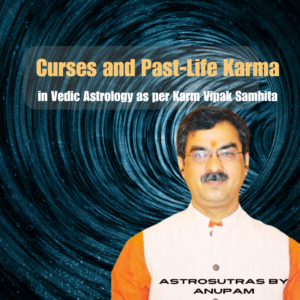The Mystery of Birth, Rebirth, and Life After Death in Vedic Astrology
Vedic astrology (Jyotish) is deeply rooted in the concept of karma, rebirth, and the soul’s journey across lifetimes. These ideas are central to Hindu philosophy and are extensively discussed in scriptures like the Bhagavad Gita, Upanishads, Garuda Purana, and Brihat Parashara Hora Shastra (BPHS).
This article explores how Vedic astrology explains birth, rebirth, and life after death, along with the planetary indications of past-life karma and how they shape present and future incarnations.
1. The Vedic View on Birth, Death, and Rebirth
A. The Soul’s Eternal Journey (Atman and Samsara)
- According to the Bhagavad Gita (2.22):“Just as a person discards old clothes and wears new ones, the soul discards old bodies and takes on new ones.”
- The soul (Atman) is immortal and is bound to the cycle of Samsara (birth-death-rebirth) until it achieves Moksha (liberation).
- Every birth is a continuation of past karma, and death is merely a transition to another existence.
2. The Role of Karma in Birth and Rebirth
Vedic astrology divides karma into three types, which influence the cycle of rebirth:
| Type of Karma | Definition | Influence on Birth/Rebirth |
|---|---|---|
| Sanchita Karma | Accumulated karma from all past lives | Determines overall spiritual evolution |
| Prarabdha Karma | Karma chosen for this lifetime | Decides birth conditions, experiences |
| Kriyamana Karma | Present actions shaping future karma | Affects future births |
A. How Prarabdha Karma Decides Birth
- The planetary positions at the time of birth reflect past-life karmas and experiences.
- The 12th house (house of past life), Atmakaraka planet (soul indicator), and Lagna (Ascendant) reveal why a soul is born into certain circumstances.
Example: If someone has a strong Saturn in the 8th house, they may be paying past-life debts through suffering or deep spiritual realization.
3. Astrological Indications of Past Life Karma
A. Important Factors in the Birth Chart
- Atmakaraka Planet (Soul’s Karmic Desire)
- The planet with the highest degree in the birth chart.
- Shows the soul’s mission, unfinished lessons, and tendencies from past lives.
- 12th House (Past Life Karma & Moksha)
- The house of detachment, previous incarnations, and life after death.
- Planets placed here indicate karmic baggage carried from past lives.
- If Jupiter or Ketu is here, the person has spiritual merit from past lives.
- 5th House (Poorva Punya – Merits from Past Life)
- Represents past-life good karma that carries forward.
- If benefic planets like Jupiter, Venus, or well-placed Moon are here, the person is born with blessings of past virtuous deeds.
- 8th House (Hidden Karmic Debts & Rebirth Process)
- This house governs death, transformation, and the occult.
- Malefic planets (Saturn, Rahu, Mars) here indicate strong karmic debts that must be cleared.
- Rahu and Ketu (Karmic Nodes – Past & Future Life Direction)
- Rahu (North Node): Desires left unfulfilled from past lives, obsession in this life.
- Ketu (South Node): Past-life mastery and detachment in this life.
- Their placement in signs/houses reveals the soul’s journey between lifetimes.
Example:
- If Rahu is in the 10th house, the person struggles for career success, as past-life ambitions remain unfulfilled.
- If Ketu is in the 4th house, the person has already experienced family and emotional fulfillment in past lives and seeks detachment in this life.
4. The Process of Death and Afterlife in Vedic Astrology
A. Death as a Transition
- Death is not the end, but a shift to another realm before rebirth.
- The 8th and 12th houses indicate the type of death and afterlife experiences.
- If Jupiter is strong, the soul enters higher realms (Pitruloka or Devaloka).
- If Rahu/Saturn is dominant, the soul may undergo karmic suffering before reincarnation.
B. The Soul’s Journey After Death
Vedic texts describe different realms based on karma:
| Afterlife Realm | Who Goes There? | Associated Planets |
|---|---|---|
| Bhu Loka (Earthly Rebirth) | Those with unfinished karma | Saturn, Rahu |
| Pitru Loka (Ancestral Realm) | Those with neutral karma | Moon, Jupiter |
| Deva Loka (Higher Divine Planes) | Saints, wise beings | Jupiter, Venus |
| Naraka Loka (Lower Realms/Hell) | Those with extreme negative karma | Mars, Ketu, Saturn |
Example:
- A person with Saturn in the 12th house might have a slow death and a longer transition between births due to past-life suffering.
- A person with strong Jupiter in the 9th house may move to Devaloka before taking another birth.
5. Liberation (Moksha) and Ending the Cycle of Rebirth
- The goal of Vedic spirituality is not just better rebirths, but freedom from the birth-death cycle (Moksha).
- Spiritual efforts (Sadhana), selfless karma, and devotion help in achieving liberation.
A. Astrological Indications of Moksha
- Strong 12th House & Ketu → Detachment from material world.
- Jupiter in Trikona (1st, 5th, 9th) or 12th house → Spiritual wisdom & divine grace.
- Moon in Pisces or Scorpio → Deep spiritual insight.
- Saturn well-placed in the 8th house → Transcendence of suffering, nearing Moksha.
Example:
- Adi Shankaracharya’s chart reportedly had a strong 12th house and Ketu influence, indicating a liberated soul taking birth for Dharma.
6. Conclusion: What Astrology Reveals About Our Soul’s Journey
- Birth is a continuation of past karma, and astrology helps in understanding why we are born under certain conditions.
- Death is not the end, but a transition to another form of existence.
- The 8th and 12th houses, Rahu-Ketu, and Atmakaraka planet indicate past-life karma, rebirth, and spiritual evolution.
- Spiritual practices, selfless actions, and wisdom help in reducing negative karma and moving towards Moksha (liberation).
Key Takeaway:
Vedic astrology does not see birth, rebirth, and life after death as mysteries but as karmic patterns that can be understood and transcended through wisdom and spiritual effort.

